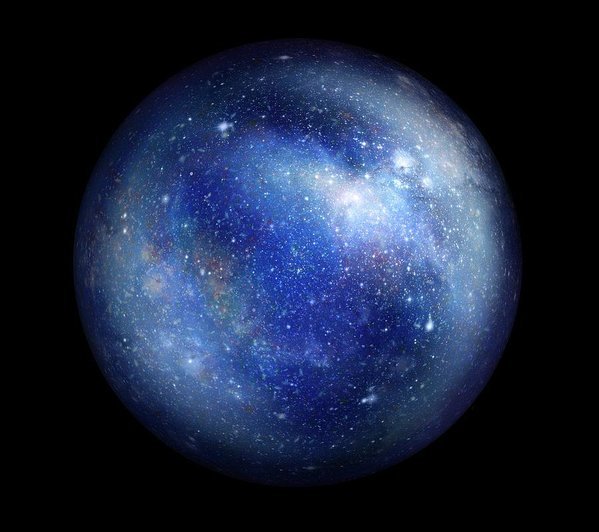A conspiracy theorist in an alien universe
In our beloved universe, planets are approximately spherical. The reason is that a planet is so massive that gravity is strong enough to impose its own symmetry on the whole body. The gravitational field in our universe has spherical symmetry, therefore planets tend to be spherical in shape. The same happens for water droplets, where surface tension is responsible for their shape. Although easily deformed, droplets of water tend to be pulled into a spherical shape by the cohesive forces of the surface layer. These cohesive forces are electrostatic in origin, and behave in the same way as gravity, having in particular the same spherical symmetry.
In other words, the spherical shape of planets and water droplets is ultimately due to the spherical symmetry of the underlying laws of physics that govern their behaviour, gravity and electrostatics respectively. Mathematically, these objects tend to minimise their surface-to-volume ratio, and, for a given volume, the object with the smallest surface area is the sphere.
Now, imagine an alien universe in which the laws of gravity are such that what is minimised for planets is not the surface-to-volume ratio, but the surface alone. More precisely, planets are shaped in a way that locally minimises the surface area.
Three scientists in this alien universe, living on three different planets measure the intrinsic (Gauss) curvature of their respective planets and meet to compare the results. Scientist 1 finds a negative Gauss curvature, scientist 2 finds a positive Gauss curvature, while scientist 3, a known conspiracy theorist, finds a vanishing Gauss curvature. Who is for sure lying?

Bonus : What kind of gravitational law gives rise to minimal-surface planets and stars?
This section requires Javascript.
You are seeing this because something didn't load right. We suggest you, (a) try
refreshing the page, (b) enabling javascript if it is disabled on your browser and,
finally, (c)
loading the
non-javascript version of this page
. We're sorry about the hassle.
Planets in the alien universe are minimal surfaces , which are characterised by having zero mean curvature everywhere. The mean curvature H at a point is defined as H = ( k 1 + k 2 ) / 2 , where k 1 and k 2 are the principal curvatures at that point (minimum and maximum curvatures). Gauss curvature, on the other hand, is defined as the product of the two, i.e. K = k 1 k 2 . Since H = 0 for minimal surfaces, k 1 ≡ k = − k 2 and K = − k 2 . Therefore K ≤ 0 and scientist 2 is lying.